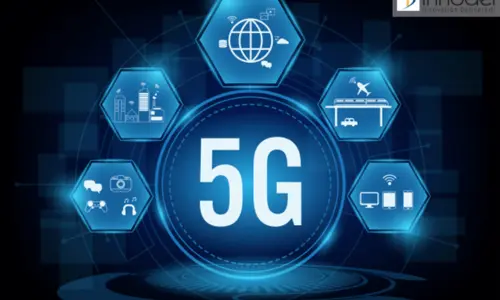Electric Cars vs. Hydrogen Vehicles: The Future of Green Transport
As the world grapples with the urgent need to combat climate change and reduce carbon emissions, the transportation sector is undergoing a profound transformation. Two of the most promising technologies in the race towards sustainable transport are electric vehicles (EVs) and hydrogen vehicles. Both have the potential to significantly reduce our reliance on fossil fuels and lower greenhouse gas emissions, but they represent different approaches to achieving a greener future.
In this article, we’ll explore the key differences between electric cars and hydrogen vehicles, their respective advantages and challenges, and what the future might hold for each technology in the quest for green transport.
1. Electric Cars: A Comprehensive Overview
1.1 How Electric Cars Work
Electric cars, or battery electric vehicles (BEVs), are powered entirely by electricity stored in batteries. These vehicles use electric motors to drive the wheels and are charged through an external power source, such as a charging station. The process of converting electrical energy into mechanical energy is highly efficient, resulting in lower energy consumption and reduced emissions compared to conventional internal combustion engine (ICE) vehicles.
- Battery Technology: The heart of an electric car is its battery, typically a lithium-ion or lithium iron phosphate (LiFePO4) battery. These batteries store electrical energy and power the electric motor. Battery capacity, measured in kilowatt-hours (kWh), determines the vehicle’s range on a single charge.
- Charging Infrastructure: Electric cars are charged using various types of charging stations, including home chargers, public chargers, and fast chargers. Charging times can vary depending on the power output of the charger and the capacity of the vehicle’s battery.
1.2 Advantages of Electric Cars
- Environmental Benefits: Electric cars produce zero tailpipe emissions, contributing to improved air quality and reduced greenhouse gas emissions. When charged with electricity from renewable sources, their overall environmental impact is significantly lower than that of ICE vehicles.
- Energy Efficiency: Electric motors are more efficient than internal combustion engines, converting a higher percentage of energy from the battery into vehicle movement. This results in lower energy consumption and reduced operating costs.
- Reduced Operating Costs: Electric cars generally have fewer moving parts than conventional vehicles, leading to lower maintenance costs. Additionally, electricity is often cheaper than gasoline or diesel, reducing fueling costs.
- Quiet Operation: Electric vehicles are known for their quiet operation, contributing to reduced noise pollution in urban areas.
1.3 Challenges Facing Electric Cars
- Limited Range: Although advancements in battery technology are continually increasing the range of electric vehicles, range anxiety remains a concern for many consumers. Some EVs can travel over 300 miles on a single charge, but this varies depending on the model and driving conditions.
- Charging Infrastructure: While the charging network is expanding, there are still areas with limited access to fast chargers. This can impact the convenience of owning an electric vehicle, especially for long-distance travel.
- Battery Disposal and Recycling: The disposal and recycling of batteries present environmental challenges. Developing efficient recycling processes and minimizing the environmental impact of battery production is crucial for the long-term sustainability of electric vehicles.
- Production Costs: The cost of electric vehicles remains relatively high compared to ICE vehicles, although prices are gradually decreasing. Incentives and subsidies can help offset the initial cost for consumers.
2. Hydrogen Vehicles: A Comprehensive Overview
2.1 How Hydrogen Vehicles Work
Hydrogen vehicles, or hydrogen fuel cell vehicles (FCVs), generate electricity through a chemical reaction between hydrogen and oxygen in a fuel cell. This electricity powers an electric motor, similar to that in battery electric vehicles. The only byproduct of this reaction is water vapor, making hydrogen vehicles a clean alternative to conventional fossil fuel-powered vehicles.
- Fuel Cell Technology: The fuel cell is the core component of a hydrogen vehicle. It converts hydrogen gas into electricity, which is then used to power the vehicle’s motor. The fuel cell’s efficiency and performance are key factors in the vehicle’s overall performance.
- Hydrogen Storage: Hydrogen is stored in high-pressure tanks within the vehicle. These tanks are designed to safely store hydrogen gas at pressures of up to 700 bar (10,000 psi). The storage system must be robust to ensure safety and performance.
- Refueling Infrastructure: Hydrogen vehicles are refueled at specialized hydrogen refueling stations. The refueling process is similar to that of conventional gasoline or diesel vehicles and takes just a few minutes.
2.2 Advantages of Hydrogen Vehicles
- Zero Emissions: Like electric vehicles, hydrogen vehicles produce zero tailpipe emissions. The only byproduct of the hydrogen fuel cell reaction is water vapor, making them an environmentally friendly option for green transport.
- Long Range: A full tank of hydrogen can provide a range comparable to that of conventional gasoline vehicles, addressing concerns about range anxiety.
- Fast Refueling: Refueling a hydrogen vehicle is quick and convenient, taking only a few minutes, similar to refueling a conventional vehicle. This contrasts with longer charging times for electric vehicles.
- Reduced Battery Dependency: Hydrogen vehicles do not rely on large batteries for energy storage, potentially reducing concerns related to battery disposal and recycling.
2.3 Challenges Facing Hydrogen Vehicles
- Hydrogen Production and Distribution: The production of hydrogen is energy-intensive and is often derived from natural gas through a process called steam methane reforming, which can result in carbon emissions. Producing hydrogen from renewable sources, such as water electrolysis using renewable energy, is more sustainable but currently more expensive.
- Infrastructure Limitations: The hydrogen refueling infrastructure is limited compared to electric vehicle charging networks. Building a comprehensive network of hydrogen refueling stations is essential for the widespread adoption of hydrogen vehicles.
- High Costs: Hydrogen vehicles are currently more expensive to produce than battery electric vehicles. The high cost of fuel cells and hydrogen storage systems contributes to the higher price of hydrogen vehicles.
- Energy Efficiency: The overall energy efficiency of hydrogen vehicles is lower compared to battery electric vehicles. The process of producing, transporting, and converting hydrogen into electricity involves multiple energy conversions, which can reduce overall efficiency.
3. Comparing Electric Cars and Hydrogen Vehicles
3.1 Environmental Impact
Both electric cars and hydrogen vehicles offer significant environmental benefits compared to conventional internal combustion engine vehicles. Electric cars produce zero tailpipe emissions and can be powered by renewable energy sources, making them a clean option for green transport.
Hydrogen vehicles also produce zero tailpipe emissions, with the only byproduct being water vapor. Hydrogen produced from renewable sources offers the greatest environmental benefit.
3.2 Infrastructure and Convenience
Electric vehicles benefit from a rapidly expanding charging infrastructure, with numerous home, public, and fast chargers available. While the charging network continues to grow, long charging times and range limitations can still pose challenges for some users.
Hydrogen vehicles offer fast refueling times and longer ranges, but the hydrogen refueling infrastructure is limited and requires significant investment to expand. Ensuring widespread access to refueling stations is crucial for the adoption of hydrogen vehicles.
3.3 Cost and Economic Viability
Electric vehicles have seen a significant decrease in production costs over the past decade, making them more affordable for consumers. Incentives and subsidies can further reduce the initial cost of electric vehicles.
Hydrogen vehicles remain more expensive due to the high cost of fuel cell technology and hydrogen storage systems. The economic viability of hydrogen vehicles will depend on advancements in technology, reductions in production costs, and the development of a robust refueling infrastructure.
4. The Future of Green Transport: A Combined Approach?
4.1 Technological Advancements
Both electric and hydrogen vehicle technologies are evolving rapidly. Advances in battery technology, such as solid-state batteries, could address some of the range and charging time concerns for electric vehicles. Similarly, improvements in fuel cell technology and hydrogen production methods could enhance the performance and sustainability of hydrogen vehicles.
4.2 Integration into Sustainable Transport Systems
The future of green transport may involve a combination of electric and hydrogen vehicles, depending on the specific needs of different sectors. For example, battery electric vehicles could be ideal for urban and short-distance travel, while hydrogen vehicles might be better suited for long-distance and commercial applications.
Government policies and incentives will play a crucial role in shaping the future of green transport. Supporting research and development, investing in infrastructure, and providing financial incentives can help accelerate the adoption of both electric and hydrogen vehicles.
4.3 Public Perception and Adoption
Public perception and acceptance of green transport technologies will influence their widespread adoption. Educating consumers about the benefits and limitations of electric and hydrogen vehicles, as well as addressing concerns related to range, refueling infrastructure, and costs, will be essential for driving adoption.
Conclusion
Electric cars and hydrogen vehicles represent two promising paths towards achieving sustainable and green transport. Each technology offers unique advantages and faces distinct challenges, but both have the potential to significantly reduce our reliance on fossil fuels and lower greenhouse gas emissions.
As technology continues to advance and infrastructure develops, the future of green transport may involve a combination of electric and hydrogen vehicles, tailored to meet the diverse needs of consumers and industries. By embracing these innovations and supporting their growth, we can move closer to a cleaner, more sustainable future for transportation.







